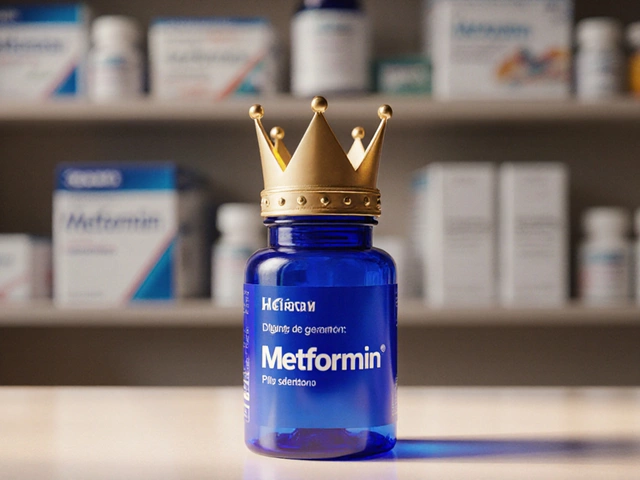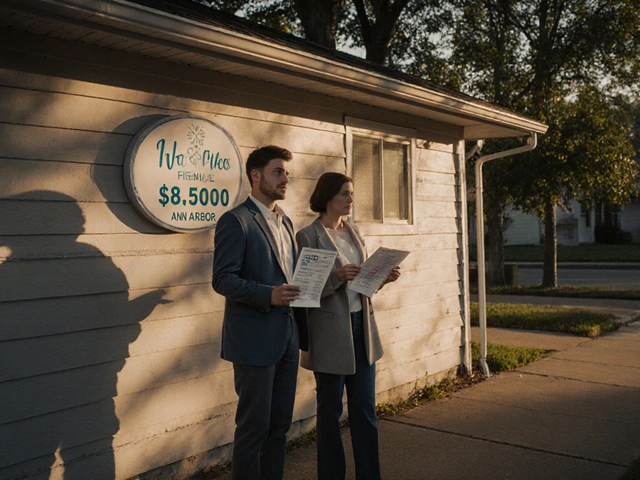Heard someone say IVF babies always need a C-section? That’s just not true. Tons of parents worry about how their baby will be born after all the ups and downs of IVF. The thing is, an IVF pregnancy is still a pregnancy—there’s no automatic rule saying you can’t have a regular vaginal delivery.
In fact, more IVF babies than you might expect arrive the way nature intended, without a surgical birth. Doctors look at the mom’s health, how the pregnancy has gone, the baby’s position, and a few other things. The whole IVF part? That's really just the first chapter. The birth plan comes down to what's safest for both mom and baby in the moment. Knowing your options means you can have better talks with your doctor—and a better idea of what to expect.
- Understanding IVF and Birth Options
- How IVF Changes Pregnancy and Delivery
- Common Myths About IVF and Natural Birth
- What Doctors Look For Before Deciding
- Tips for IVF Moms Hoping for a Natural Delivery
Understanding IVF and Birth Options
So, what exactly is IVF? It stands for in vitro fertilization—basically, it’s when eggs and sperm are brought together in a lab, and the resulting embryo is placed in the uterus. After this step, if the embryo implants and grows, the pregnancy continues much like any other.
Now here’s where people get confused: just because IVF was used at the start doesn’t mean delivery options are limited. For most women who get pregnant with IVF, the main ways to give birth are still the same as with natural conception. That means you usually have a choice between a natural vaginal birth and a C-section, unless there’s a specific medical reason for one over the other.
Doctors don’t just default to C-sections for IVF babies. What matters more is stuff like the mom’s age, if she’s carrying twins or more, her overall health, and how the baby is doing. The route of delivery is decided more by what’s going on in those final months than by how the pregnancy started.
- Vaginal birth: For many IVF moms, having a vaginal birth is possible if there are no extra risks.
- C-section (Cesarean): Sometimes a planned C-section is the safer route, especially if there are complications like placenta previa, breech baby, or twins.
To put things in perspective, check out this quick breakdown of birth methods in IVF pregnancies. It’s based on reports from large hospitals:
| Delivery Method | Approximate Rate in IVF Pregnancies |
|---|---|
| Vaginal Birth | About 30-40% |
| C-section | About 60-70% |
These numbers are higher for C-sections than the general population, but they still show that natural births after IVF aren’t rare. What matters most is a healthy mom and baby, not just the method of delivery.
How IVF Changes Pregnancy and Delivery
When you go through IVF, doctors keep a closer eye on every step of your pregnancy. That doesn’t mean your body works differently, but IVF moms sometimes face more checkups and ultrasounds than those who got pregnant naturally. The reason? Just to make sure everything’s on track since IVF pregnancies can have slightly more risks.
Let’s talk about what really changes. IVF pregnancies can have a higher chance of certain things, like:
- Multiple births (think twins or triplets), because more than one embryo might be transferred.
- Slightly increased rates of preterm birth (babies born before 37 weeks).
- Placenta issues, like placenta previa, which can sometimes make a C-section more likely.
- More monitoring for things like blood pressure and gestational diabetes.
This doesn’t mean natural delivery is off the table. If the pregnancy is going smoothly, your baby is positioned head-down, and there aren’t any complications, it’s totally possible to have a vaginal birth, even after IVF.
Check out this simple breakdown of delivery stats for IVF pregnancies compared to natural ones:
| Delivery Method | IVF Pregnancies | Natural Pregnancies |
|---|---|---|
| Vaginal Birth | Up to 60% | About 70% |
| C-Section | About 40% | Roughly 30% |
So yes, natural birth is still common—it's just that doctors and parents sometimes make extra cautious choices because of all the effort it took to get to this stage. If you’re healthy and baby is in a good spot, there’s a solid shot at a vaginal delivery. The main thing is your doctor will focus on what keeps both you and your little one safe at the finish line.

Common Myths About IVF and Natural Birth
So many people believe myths about IVF and birth, it's honestly hard to keep up. Probably the biggest one? If your baby was conceived through IVF, you can’t deliver naturally. But let’s get this straight—being born through IVF doesn't mean a C-section is required.
Here’s where folks get confused: Sometimes IVF pregnancies are watched more closely because couples might have a history of fertility issues, might be older, or maybe there are twins or triplets involved. Those things—not the IVF itself—can affect the birth plan. But for most healthy women, even after IVF, vaginal delivery is very much on the table.
- Myth 1: "All IVF babies are high-risk and need a C-section."
Fact: Most IVF pregnancies are actually pretty routine. Unless there’s another medical reason, your doctor could give the go-ahead for a normal birth. - Myth 2: "IVF causes weak uteruses, so natural birth isn’t safe."
Fact: There’s zero proof of this. IVF doesn’t make your womb weaker. Your uterus works the same, whether with IVF or not. - Myth 3: "IVF babies are always premature or have birth complications."
Fact: Some stats show a slightly higher chance of early birth with IVF, but it’s not a slam-dunk prediction. Plenty of IVF babies arrive right on time without drama.
To give you a clearer picture, check out this comparison of C-section rates for IVF versus natural pregnancies. The numbers aren’t as far apart as people think.
| Pregnancy Type | C-Section Rate |
|---|---|
| IVF | ~35-45% |
| Non-IVF (natural conception) | ~25-35% |
Why the difference? Sometimes parents and doctors choose C-section "just in case" or after years of waiting for a baby, not because of any IVF rule. If you’re healthy and everything is smooth, a natural birth is usually the goal, no matter how your baby was conceived.
What Doctors Look For Before Deciding
There’s no one-size-fits-all answer when it comes to how IVF babies are delivered. Doctors don’t make the call just based on how your pregnancy started—they’re checking a list of specific factors to decide what’s safest for you and your baby.
Here are some of the top things your doctor will look at:
- Mom’s health history: Conditions like high blood pressure, diabetes, or previous surgeries can make a difference. If you’ve had a C-section before, your doctor will consider that too.
- How the pregnancy is going: If things have been smooth and there aren’t any complications, a natural birth is usually still on the table. But if there are risks like placenta previa (when the placenta is low) or preeclampsia, your doctor might lean toward a C-section.
- Number of babies: Carrying twins or more after IVF? Multiple pregnancies do increase the chances of needing a C-section, just because complications are more likely.
- Baby’s position: If your baby is head-down close to your due date, that’s good news for natural delivery. Breech or sideways babies can mean surgery is safer.
- IVF Type: For women using their own eggs and uterus, results are closer to normal pregnancies. If donor eggs or surrogacy are involved, doctors pay extra attention to the details.
Here’s a quick look at some known stats based on research from 2023 on IVF and delivery types:
| Delivery Type | % in IVF pregnancies | % in natural pregnancies |
|---|---|---|
| Vaginal Birth | ~50% | ~65% |
| C-section | ~50% | ~35% |
So yes, C-sections are a bit more common in IVF cases, but half of IVF moms still deliver naturally. The final decision is made close to delivery time, after a look at all these factors rather than sticking a label on the pregnancy from day one.

Tips for IVF Moms Hoping for a Natural Delivery
If your goal is a natural birth after IVF, there’s some good news: it really is possible for most healthy moms. But you’ll want to be prepared, work closely with your healthcare team, and keep an open mind. Here’s what helps put the odds in your favor.
- Build a strong bond with your doctor: Make sure your OB knows you prefer a vaginal delivery. Good communication helps your team spot any challenges early, so there are no surprises.
- Ask about your pregnancy risk factors: IVF alone usually doesn’t mean you need a C-section, but things like older age, twins, or certain medical issues can affect your options. Bring up your full health history right from the start.
- Stay active if you can: Gentle exercise—like walking or prenatal yoga—keeps your body ready for labor. Always ask your doctor what’s safe, since every pregnancy is different.
- Track your baby’s growth: IVF moms get more ultrasounds. That’s good! You’ll know right away if baby’s size or position could limit a natural birth.
- Learn about induction and interventions: IVF pregnancies sometimes go past the due date. Ask your doctor about how and when they might recommend an induction and what that could mean for your plan.
Quick fact: A 2023 review in the Journal of Obstetrics & Gynecology found that about 60% of IVF pregnancies with no major complications ended in vaginal delivery—pretty close to natural conception numbers.
| Factor | How It Impacts Natural Birth |
|---|---|
| Single baby, head down | Higher chance of natural birth |
| Older maternal age | Slightly more likely to need a C-section |
| Twins or triplets | Often recommended for C-section |
| High blood pressure/preeclampsia | More likely to need intervention |
The bottom line? Stay flexible and keep asking questions. The best delivery is the one that gets both you and your baby through safely. Having a clear birth plan helps, but your care team’s advice matters most if things change on the big day.

 Understanding the Challenges of Curing Pancreatic Cancer
Understanding the Challenges of Curing Pancreatic Cancer
 Top Diabetes Medication: Why Metformin Leads the Pack
Top Diabetes Medication: Why Metformin Leads the Pack
 Which State Has the Cheapest IVF in the U.S.?
Which State Has the Cheapest IVF in the U.S.?
 Understanding Organ Shutdown in Terminal Cancer: First Signs and Steps
Understanding Organ Shutdown in Terminal Cancer: First Signs and Steps
 What Herbs Should You Not Mix Together? Avoiding Dangerous Herbal Combos
What Herbs Should You Not Mix Together? Avoiding Dangerous Herbal Combos